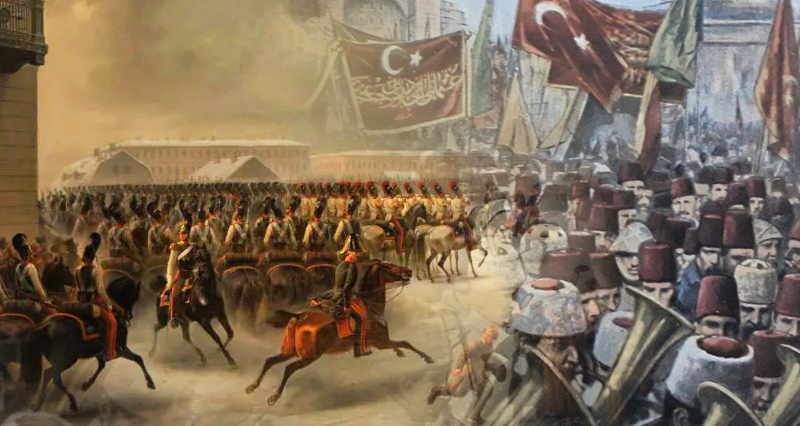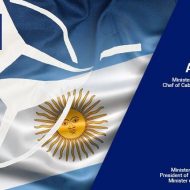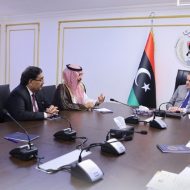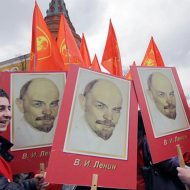Following Russia’s special military operation in Ukraine, a debate lived up again on the role of force and violence in history – especially concerning the history of Russia itself. United World International author has given a lengthy interview to Emrah Maraşo, editor-in-chief of Turkish monthly magazine Bilim ve Ütopya (Science and Utopia).
The interview was published first in Turkish. UWI presents it in chapters to our readers.
After the war with Napoleon, a new consciousness was born among Russian officers and intellectuals so to say. Organizations such as the Order of the Russian Knights, Union of Salvation and the Union of Welfare were founded. In 1825, 30 officers, later known as Decabrists, rose up against the Tsar with a military unit of 3,000 men. How does this act of violence affect Russian revolutionary thought and pratice?
Aggression of the West and Decabrists
The emergence of the Decabrists is rooted in aggression of the West (war against Napoleon in 1812). Napoleon entered the borders of Russia and occupied Moscow. At that time there was a great French admiration among the Russians, French was spoken in the palace, government correspondences were conducted in French. The Russians, whom they call “mujiks”, were serfs and in the eyes of this group, they are worthless men, even not human. Before this war, being Russian was a humiliating thing. With the war of 1812, this changed.
Russian peasants on the scene of history
Suddenly the Russian peasants appeared on the scene of history organizing the world’s first guerrilla movements. The aristocrats found themselves in fighting shoulder to shoulder with the Russian peasants whom they had previously despised, even not seen as human beings. At this point the Russian aristocracy realized the importance of the Russian peasant. This created the idea among the Russian aristocracy that the peasants and the Russians must be liberated. “We saved this country together with this peasantry from the French,” they said. “We considered them inferior, like animals, but these are brave people loyal to their country”. The name of the struggle against the 1812 invasion is also meaningful: The First Homeland War (and note that the defense in World War II was the Second Homeland War).
Aristocrats’ changing attitude towards Russian people
Liberation movements began to spread among the aristocrats who discovered the capabilities of the Russians. Pushkin and the like appeared in this milieu. All the 19th century literati, composers and painters arose in the heat of 1812 and ‘discovered’ Russia.
That’s also how the Decabrists took shape. The decabrists were all people who “betrayed their class”. They were all aristocrats and soldiers, relatives and closest friends of the tsar, people who came in and out of the palace. They betrayed their class and went as far as the idea of establishing a republic. There were a few secret organizations that advocated the establishment of a republic and the abolition of serfdom. Then some of them were executed, others exiled. This exile experience also played an important role in the Decabrists’ exploration of Russia and Russians. Because they were sent to Siberia, in other words, they “went to the people”. Their wives followed them leaving the balls and palaces behind. Even today in Russian there is an idiom “to be a Decabrist’s wife”. They call resilient person who undergoes all the hardships “Decabrist’s wife”.
Violence, but how?
Narodniks mostly emerged from small and middle level civil servants and nobles discontented with existing order. ‘Young Russia’ was founded in 1861 and ‘Land and Freedom’ in 1862. Lenin’s older brother was a Narodnik too and executed after the assassination attempt on the Tsar. On what ideological base was the violence of the Narodniks grounded?
The people must be involved in violence. When there is no people, it turns into either imperialist violence or the violence of capitalist travelers, or within bourgeois democratic countries it turns into the dictatorship of collaborators of imperialists. In other words, any violence in which the people are not mobilized will, one way or another, take on a counter-revolutionary form. When we look at the 2nd World War we see the mass mobilization of people, as in the War of 1812. In the Decabrist movement, there are populist aspirations such as the abolition of serfdom, the establishment of a republic, the right to vote.
In the name, yet without the people
But the Narodniks were a predominantly bourgeois movement that did not address the problems of the peasant and working class, and over time their actions degenerated into individual terrorism. In other words, there was no ‘people’ within the movement. Maybe they did things ‘in the name of the people’, but they had an attitude that downplayed and did not prioritize the role of the working class and the people.
Actually, this reminds us of the difference between the 1968 movement and the movements after the military coup of March 12, 1971 in Türkiye. The former mobilized the masses, and the masses exercised power, pressure and violence themselves. The beating up of the US 6th Fleet soldiers is an example. In the latter, the case was the individual terror, that is, movements detached from the people.
Narodnism: populism, revolutionism and the tradition of rebellion
Nevertheless, it would not be accurate to describe the Narodniks as completely detached from the people; rather we can say that they did not recognize the role of the working class, the circumstances they were in and the goals that lay ahead of them. They have an inclination to bypass the stage that history has set before them and move on to a ‘further goal’. Despite all this, the Narodniks have their place in the world revolutionary movement in terms of populism, revolutionism and the tradition of rebellion.
Lenin had an important saying during the October Revolution: “If we had attempted to take power yesterday it would have been too early, if we do it tomorrow it would be too late. The time is now”. One: when the conditions are right and two: by mobilizing the people. Without the second, after a while violence serves the counter-revolution.
Machine breakers and Spartacists
The Utopists destroyed the machines, for example. This violence too was against capitalism. But what is the outcome? They sabotaged the machines by sticking wooden and stovepipe in. The word ‘sabotage’ was born from this. So, it is not enough to use violence against capitalism and act in good faith. It only makes sense to use violence at the right time, under favorable conditions, with the people, with the right strategy, ideology and on the basis of the mobilization of classes that can change history. Otherwise they are doomed to fail.
Another example is the Spartacists. The Spartacists had the right goal, they acted with the people’s support, but there were no appropriate conditions and class basis. At that time ‘history’ was not offering the economic basis on which slaves could establish their power. Suppose they came to power, they would have been a little more just at the beginning, but then like Caesars.
The Narodniks and the Young Turks
How and in what ways did the Narodniks influence the Young Turks?
They influenced the Young Turks in terms of the tradition of rebellion and the idea of populism. There are even direct connections, for instance the travel of people like Yusuf Akçura from Russia to Türkiye. Ahmet Ağaoğlu founded a terrorist organization called ‘Fedai’ in the 1910s. By ‘terrorist organization’, I don’t mean in today’s sense, but in the sense that they had illegal committees that used terror and violence. These people brought the idea of populism, rebellion, revolution and the use of force to overthrow despots to the Ottoman Empire.
In addition to their own internal dynamics and experiences, the 1905 Russian Revolution was one of the international sources of the Young Turks. Turkists coming from the movements in Russia had meetings with the Ittihadists (Unionists) in Türkiye.
Also the revolutionaries from Russia came into contact with the Ittihadists-Young Turks during exile in Paris and exchanged ideas. Arda Odabaşı and I wrote a book titled ‘The Young Turk Revolution in Stambulskie Novosti’. In that book, the issue of Narodnik and Russian influence can be read with documents and examples.
To be continued..









Leave a Reply